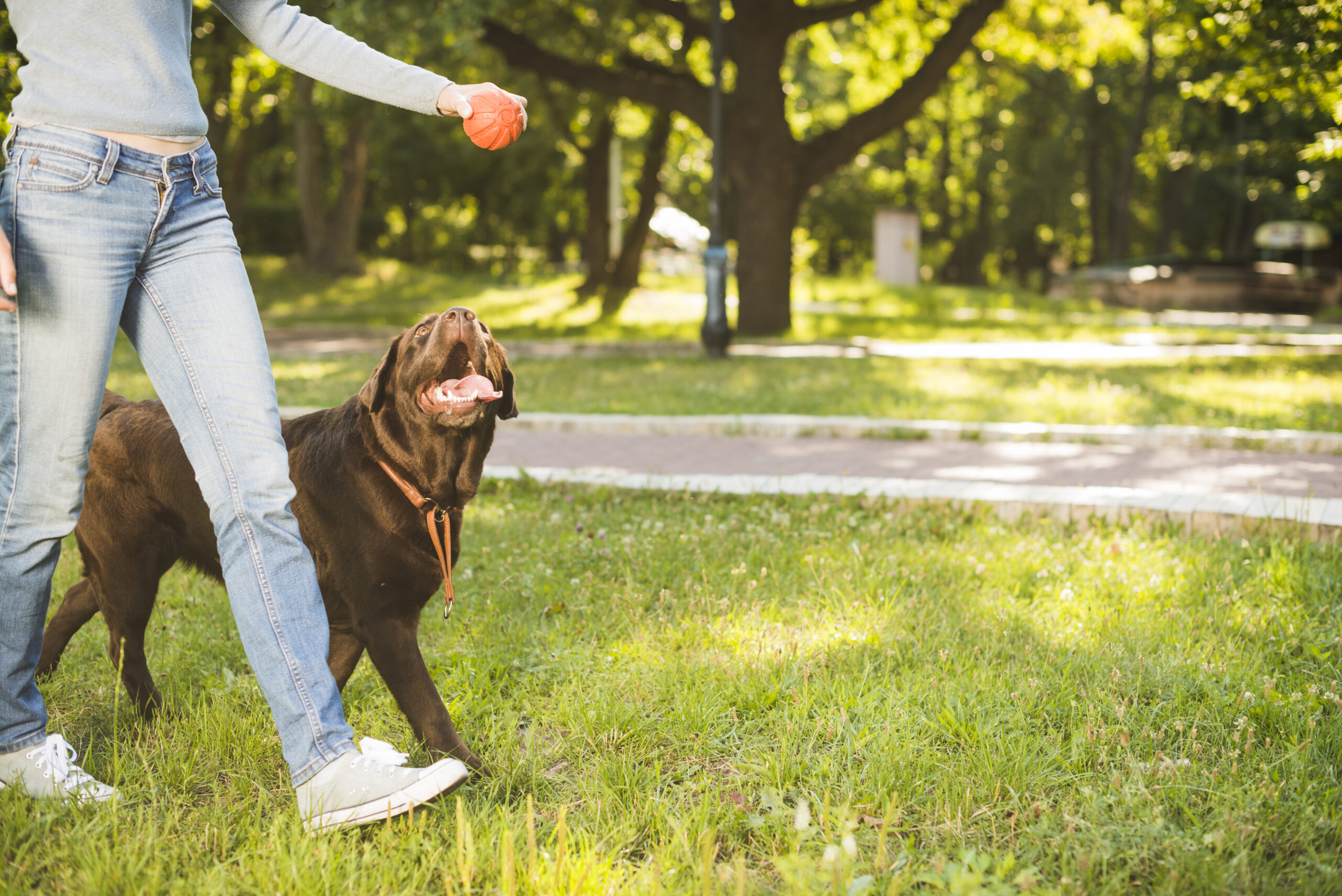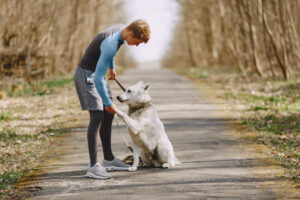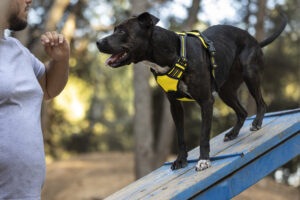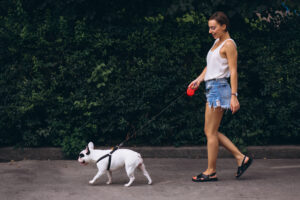Essential Dog Commands: The Top 10 Commands Every Dog Should Know and How to Teach Them.
Teaching essential dog commands is crucial for their safety and well-being. In this guide, we’ll cover the top 10 dog commands every pup should know and provide you with effective techniques to teach them.
1. Sit
The “Sit” command is often the first command taught and serves as the foundation for many other behaviors. To teach “Sit,” begin by holding a treat close to your dog’s nose and slowly move it upward and over their head. As your dog’s head follows the treat, their bottom will naturally lower to the ground. As soon as they sit, say “Sit” and reward them with the treat. Repeat this process regularly in various environments to solidify their response.
2. Stay
“Stay” is essential for keeping your dog in place when you need them to remain stationary. Start by asking your dog to sit. Then, hold your hand out in front of them and say “Stay.” Take a step back, and if your dog remains in place, return and reward them. Gradually increase the distance and duration before rewarding them. Practicing “Stay” with varying levels of distractions will enhance their reliability.
3. Come
The “Come” command is vital for recall, ensuring your dog returns to you when called. Begin in a distraction-free environment. Call your dog’s name followed by “Come” in an enthusiastic tone. When they come to you, reward them immediately with treats and praise. Increase the distance gradually and practice in different settings to improve their recall skills.
4. Down
“Down” is useful for calming your dog and making them settle. Start with your dog in the sitting position. Hold a treat close to their nose and lower it to the ground between their front paws. As your dog follows the treat, their body will naturally lower into the “Down” position. Once they are lying down, say “Down” and reward them. Consistent practice in various environments will reinforce this command.
5. Leave It
The “Leave it” command is crucial for preventing your dog from picking up or approaching something they shouldn’t. Hold a treat in your closed hand and let your dog sniff it. When they stop trying to get the treat, say “Leave it” and give them a different treat from your other hand. Gradually apply this command to objects on the ground to teach your dog to avoid undesirable items.
6. Drop It
“Drop it” helps you manage what your dog carries in their mouth. Begin by giving your dog a toy or object to hold. Say “Drop it” and offer a treat in exchange for the item. Once they release the object, reward them. Practice with different toys and objects to ensure your dog learns to drop whatever you ask.
7. Heel
Teaching your dog to “Heel” is essential for walking calmly by your side. Start walking with your dog on a leash and use a treat to encourage them to stay beside you. Use the command “Heel” and reward them when they walk in the correct position. Gradually increase the duration of walks while maintaining the “Heel” position to reinforce this command.
8. Wait
“Wait” is useful for teaching your dog to pause before proceeding. Ask your dog to sit or lie down, then say “Wait” and take a step back. If they remain in place, return and reward them. Practice this command with increasing distances and distractions to strengthen their understanding.
9. Go to Your Spot
The “Go to your spot” command helps your dog go to a designated place, such as a mat or bed. Use a treat to guide your dog to the chosen spot and say “Go to your spot.” Once they are on the spot, reward them. Practice increasing the time they stay there to reinforce this command.
10. Back Up
“Back up” is useful for managing space and keeping your dog from crowding you. Stand in front of your dog and use a treat to lure them backward. As they move back, say “Back up” and reward them. Practice this command in various settings to ensure your dog learns to back up on command.
Training your dog in these essential commands can transform their behavior, improve their safety, and enhance your relationship. Positive reinforcement and consistent practice are key to successful training. For more tips on dog training and creating a well-behaved companion, keep following our blog for the latest insights and techniques.





